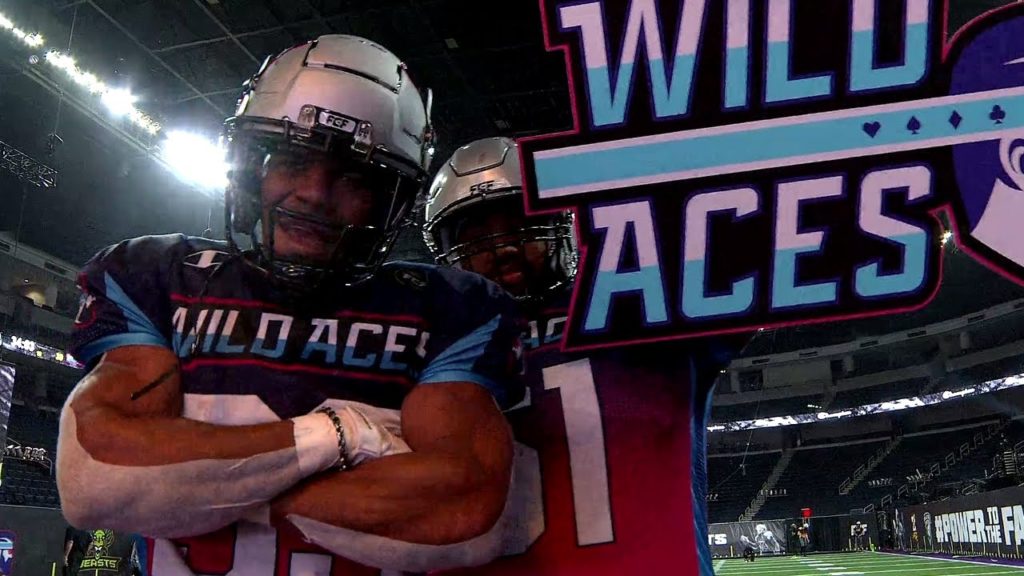

In english
INTERVIEW: Aileen McManamon « A more responsible fan experience for happier fans »
Aileen McManamon, founder of 5T Sports, helps us navigate through the challenges and opportunities of sustainability and fan experience.
Is putting on a great show incompatible with sustainable development? Sports franchises and leagues rely heavily on live entertainment. The necessity for sports companies to provide a fun experience to their customers is often perceived as conflicting with sustainable development.
How can sports franchises promote sustainability while providing a memorable fan experience? That is the question we tackled with Aileen McManamon, founder of 5T Sports Group.
Hello Aileen, could you please introduce yourself to our readers?
I found my way to the sports industry via the automotive and technology sectors. I’m originally from the United States (Cleveland, Ohio) and studied Economics and then International Business which led me to work for GM, FIAT and Alfa Romeo in Germany. There I handled Marketing & Advertising which included our sports partnerships with the Tour de France and auto racing, so I have a good grounding in both brand strategy, consumer marketing and leveraging sports as a messaging medium. When I joined the technology sector in 1995 things were developing quickly so I had to stay knowledgeable about tech development as well as sort out the hype from the reality of products, services and companies. My tech career took me from Germany, back to the U.S. (Chicago then San Diego) and finally to Vancouver, Canada.

Aileen McManamon, founder of 5T Sports
When Vancouver won the hosting rights for the 2010 Winter Olympic Games in 2003, I decided my first love of sports was where I wanted to be working professionally, so I analyzed where my insights from sports marketing, consumer / fan behavior and innovative technology (especially for communications) could best ‘play’ in sports. I began with several projects which included promoting Canada at the 2006 Torino Winter Olympic Games, launching several skiing related products and running our professional baseball team. My career has been a fun adventure around a number of different sports, sectors and countries! I think this has helped me gain a broad and thoughtful perspective on the fan experience.
10 years ago you founded 5T Sports. Could you please tell us about the goal of this company?
Initially I began in brand strategy and promotions/sponsorships and worked on Olympic-related projects – this was something I knew how to do, but honestly it didn’t challenge me, and professionally we all need that.
As the global financial crisis and climate crisis were unfolding during the first year I launched 5T, I decided that the industry needed ‘future-proofing’ and made my focus on ensuring sports teams, leagues, venues and host cities were operating as environmentally, socially and economically responsibly as possible.
« This is really our goal – to empower teams, leagues and events to operate at as high of a performance level on and off the field as possible – in the eyes of their fans, their communities and their brand partners – so the game can go on forever, bring us a break from our day, lifting us up and bringing us together. »
We are living in challenging times and are likely to need to make sacrifices, or put another way, to fundamentally shift our lifestyles (esp in North America, Europe and other affluent countries). Sport cannot be frivolous or it will not have the ‘social license’ to operate.
When you often talk about sustainability in the sports industry you often refer to UNO’s Global Goals for Sustainable Development. They address with topics we are all impacted by, not only public organizations but also private companies and individuals. You believe sports in particular is the perfect way to sensibilize every of those actors to the cause. Why?
On a very basic level, the Global Goals (SDGs) are, well, simple! They are easy to understand, represented by simple icons and bright colors so they fit very well in the sports landscape where we are used to bright colors, symbols/icons/crests and short phrases in plain language.

The Global Goals for Sustainable Development
The Global Goals serve as the colors, crests and rallying cries for the ‘World Team’ we are all on, so they offer a beautifully simple, common language for sports to communicate how they are taking responsibility in their own operations and beyond in the community. Adopting this ‘language’ aligns the sports industry with the vast movement of 193 countries, over 10,0000 private companies, countless NGOs.
Because they are quite succinct and recognizable on sight, they are well-suited to story-telling in the fast-paced, busy ‘landscape’ of sports where there are so many sponsor logos, team emblems and other visual cues – they fit perfectly in this environment as a quick and easy way to open discussion or simply highlight actions leagues and partners are undertaking together.
At this stage it is really the sports industry, especially at the team level, that needs to adopt and use the language more, as it has been so widely adopted and is becoming increasingly recognized by fans as consumer brands are increasingly using it more publicly.
It enables sports teams, leagues and events to identify their corporate partners’ interests and suggest fan messaging around them that uses this language.
Many teams and leagues, especially in football, have a global audience and fans that follow them all around the world. I may not be able to read every article or tweet that a Japanese baseball team puts out, but if they use the SDGs to share what they are doing in their community I instantly understand and can connect with that.
Most of our audience are sports professionals specialized on marketing and fan experience. What is an easy way for them to improve their organization’s footprint?
I am a big fan of teams and venues investing and using the fantastic technology we have available to run their organization as efficiently (and profitably!) as possible. We all benefit when they do as they can invest more in great players or in the fan experience, or into community programs.
« Fans are likely to spend 22% more on food & beverage in a venue that recycles and 32% more likely to return to a venue that recycles »
In the ‘back of the house’ to operate venues and related offices more efficiently. This would include using LED lighting on the field or in the arena, using advanced building control software with weather and occupancy sensors to manage heating and cooling better and in specific areas, rather than a whole-building approach, and using low-flow toilets and sinks as well as greywater for field irrigation and cleaning. Some of these directly impact fan experience (less harsh lighting, more comfortably heated/cooled venues) while others save money that can be spent of more fan amenities.
Technology that drives efficiency at the ‘front of house’ (seating areas as well as marketing/advertising) include mobile (paperless) ticketing, mobile wallets for payments at concessions, including transit tickets with event tickets and running customized, digital marketing campaigns. The first 3 open new paths for sponsorship — both in sponsor assets and in the coveted digital/mobile space where your connection to the fan is 1 to 1. In terms of running custom digital campaigns, fans appreciate when the club is using the CRM software to recognize how much the fan is spending and following the team so they are rewarded & recognized for their loyalty. Brands appreciate having the level of detail that comes from these campaigns as fans can be segmented better and messaging and promotional offers can be better tailored to their interests and their purchasing habits. This level of detail also helps the brands (sponsors gain solid insight into how their investment with the club or event is reaching key audience targets.
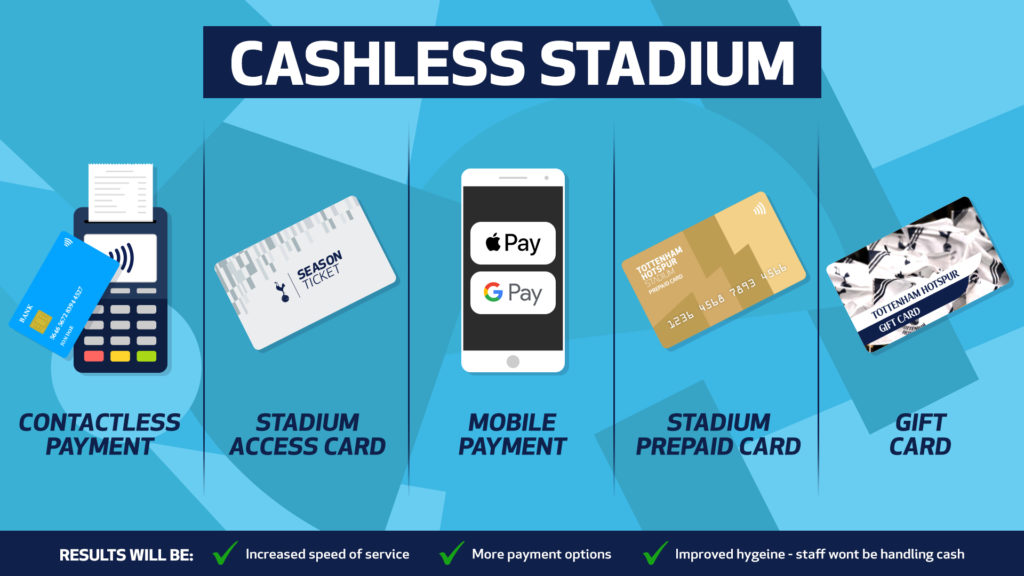 @Tottenham
@Tottenham Cashless solutions can help a stadium to be more responsible
Finally, a large factor in any event is waste. And fans notice waste – a lot. Of course, the more waste the harder it is to maintain a great gameday experience with bins overflowing. NatureWorks published some great data from a few years back that fans are likely to spend 22% more on food & beverage in a venue that recycles and 32% more likely to return to a venue that recycles.

NatureWorks Infographic
Recycling is wonderful but reducing input and waste in the first place is the best place to focus for emissions, social and cost savings.
Where possible, buying locally means shorter distances supplies travel to get to the stadium, which reduces emissions. Nearby suppliers also reduce the need to ‘stock-up’ which can improve ordering in the right quantities. Greater efficiency here also results in cost savings from hauling away less waste/paying lower landfill fees. When a team or venue buys locally, the economic benefits stay local. Which means more money for local business owners to take their family to a game or even become lower level sponsors of the club!
Fan experience is all about providing fun to spectators. What is your favorite example of a responsible activation that fans loved? What was its results?
The Chicago Blackhawks of the National Hockey League (North America) ‘rebranded’ five of the city’s bikeshare bikes a few years back with the jersey numbers of 5 of their players. They encouraged fans via social media to look for the bikes around town (there were 5000 bikes in Chicago’s DIVVY bikeshare fleet at the time!), take one out and post a photo of them riding it.
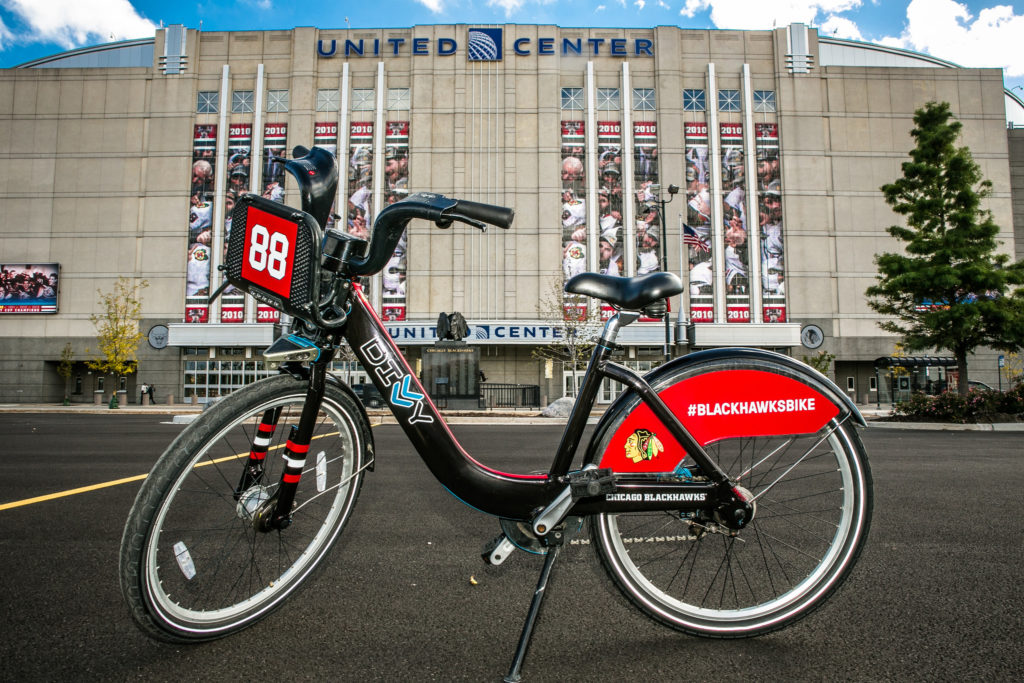 Baltimore Sun
Baltimore Sun DIVVY bikes Chicago Blackhawks
Fans were thrilled to hunt for and ride a ‘player’s’ bike and share that with their friends. The players also interacted either with them here & there, with a ‘like’, comment or a retweet/repost. There were some small weekly prizes for them too. The team got a great deal of media out of the promotion. And the bikeshare program saw an increase in new account sign-ups and overall ridership.
The idea was to get more people considering/using bikes as transportation and of course promote a healthy lifestyle. Fans didn’t need to think about that though. They were simply having some fun and trying to gain some bragging rights with their friends, perhaps be lucky enough to get some acknowledgement from a favorite player.
We pause for sports – because we need a respite from our daily routine or our cares and concerns. We don’t want to have someone stop the game and lecture us about climate, so I am very emphatic that any activation around sustainability is appropriate to the sports environment – whether it’s a rivalry challenge, a contest or something like the above where we ‘gamify’ a healthy behavior in a way we barely even know we’re doing it. We are all kids at heart and sports activations in this space should speak to the fun-loving kid inside. Every time.
Another concern about moving to a more responsible way of operating is financial consequences. How do you put this into perspective?
As noted above, operating more responsibly often results in cost savings, though typically this will involve some investment. We do a lot of work in helping teams calculate the return on investment and payback periods, as well as guide them to financing options for installing energy, water or waste-saving solutions. In North America there are both public and private grants, loans and financing programs to support the move to a cleaner, more efficient operations.
We are now at the point that clinging to old technologies is creating financial instability as rising energy and water rates are hurting profitability. We have seen a great deal of this in ice hockey where the water consumption, building refrigeration and associated energy are threatening the ability of smaller community arenas to continue operating. The NHL is very aware of this and began stepping in years ago to help test new technology for its own clubs to mitigate the risk of adopting it and also sharing its knowledge with the community of hockey operators. Without ice rinks, no young players. Without young players, no pros. No pros,no NHL.
Of the top 25 global brands who spend the most on sports partnerships, every single one has a strong, publicly stated, measured and often 3rd-party-verified environmental and social responsibility plan. Many of these brands’ current advertising campaigns speak directly to their commitments in this space. Sports partnerships are created when the brand sees ‘shared values’ and a net positive association from its investment in a team, league or club. If sports properties aren’t demonstrating those ‘shared values’ or through their inaction may be a negative or detraction from the brand, the brand will look elsewhere – either to a competitor or even to place greater investment in NGOs who share their mission.
So on both the cost and the revenue side of the balance sheet there are financial risks in not acting.
To wrap up interviews I like to ask interviewees the following questions:
What’s a fact about your area of specialization that people would never guess/that would really surprise people?
There are over 1,000 sports leagues, teams, federations and venues around the world who are taking action in one way or another on environmental and social issues.
Most people think that sports teams & clubs aren’t giving this any thought at all, so I usually surprise people when I tell them how widespread it is and the types of things that teams are doing. I love sharing those feel-good moments as I often try to tell them something wonderful that their favorite team or sport is doing if I can. I can see their eyes smile when they learn that and it gives me great joy.
What’s an upcoming event/project/innovation in your area of specialization that you are excited about and you would recommend people to keep an eye on?
I am currently working with a lovely group called Planet Super League to bring a fan engagement campaign / contest together in the UK that would be a joint effort between the English Premier League, the Football Association and many of the member clubs to challenge fans to reduce waste at home, work and play. This will be done through a fun, witty and we hope, rivalry-fuelled challenge throughout the country.
We’ve just done our first joint workshop to begin the development with both sports and NGO representatives at London’s Olympic Stadium, hosted by West Ham and Delaware North, their venue caterer. We’re thrilled to move this ahead and hope to launch in 2020.
I was also a co-author of the recently launch UN ‘Sports for Climate Action’ initiative, which challenges the sports industry to reduce its carbon footprint and to be an ambassador for climate action with fans by using its platform to communicate what the sports industry are doing and what fans can and should do. There are several notable signatories already, including the IOC, UEFA, World Sailing, World Surf League, World Rugby, all 4 tennis Grand Slam events, Paris 2024, Formula e, the NBA and the New York Yankees.
Fans should keep an eye out for this – perhaps even prompt their favorite team to join the world-class organizations above.. I would love to see supporters’ groups start to come up with their own grassroots movement on how to work as a team to make their community – and our world – a better place for themselves and all the future fans out there.
Vous avez aimé cet article ?
In english
Watch the game from the POV of your favorite athlete
ActionStreamer is a wearable data streaming platform delivering breakthrough solutions across sports, entertainment, telecommunications, industrial, and defense. From custom wearables to real-time data movement, omnichannel content delivery and multi-stream media viewer, the company provides leagues and sports events with a fully customisable immersive viewing experience.
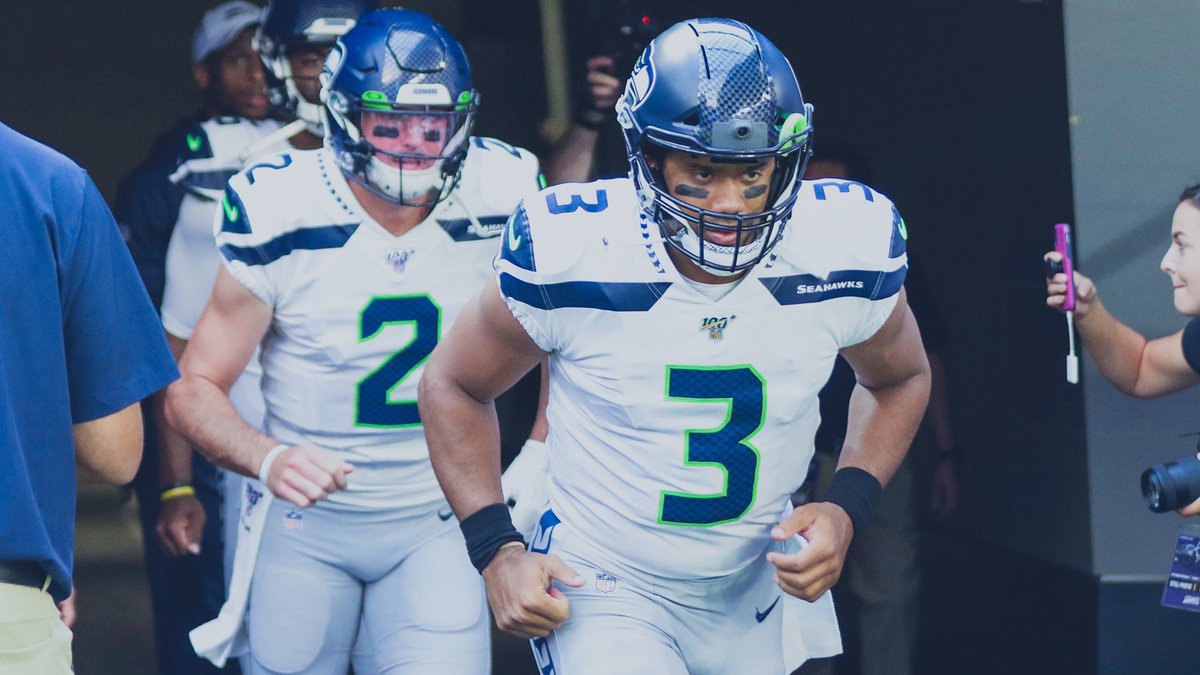
ActionStreamer brings sports fans closer to the action. The American company equips players with helmets that have cameras mounted on them. Greg Roberts, Head of Strategic Partnerships & Development at ActionStreamer, shared with us the company’s ambitions.
ActionStreamer gives fans a new perspective on the action and insights on the game
Thanks to advances in video stream processing, every fan can follow sporting events from the angle that suits them. For example, during car races, every fan can follow their favorite driver. During tennis competitions you can choose to follow the match that interests you the most. At a soccer match you can watch the action from the angle that best shows how the striker won over the goalkeeper.
ActionStreamer takes customisation and immersion to the next level. The American company allows fans to follow the action from a player’s point of view. With cameras mounted on players’ helmets and caps, viewers are right in the middle of the action. American soccer fans were able to test the device at the 2019 Pro Bowl, in the XFL, during Russell Wilson’s warm-ups or during the first season of Fan Controlled Football.
ActionStreamer’s solution does not just provide athletes with helmet cams. Their technology also captures data about biometric, speed and geo in real-time. This data is easily displayable live on broadcast.
From headsets to video streams management, ActionStreamer thought about everything
Giving fans a first-person viewing experience is a very ambitious idea. To make it a reality, the founding team of ActionStreamer faced two challenges: convincing players and making it easy to process all the video streams coming from the helmet cams.
ActionStreamer’s product development team works closely with helmet suppliers and players. The company integrates cameras in helmets that players already use. The goal is for players to not even notice they have different equipment.
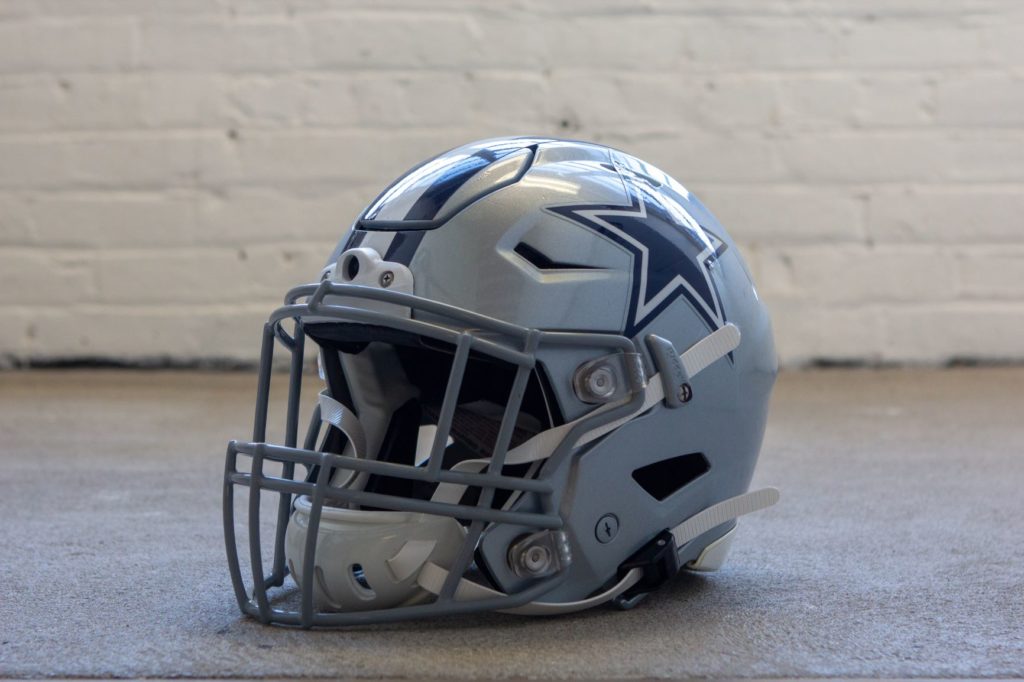
Dallas Cowboys Riddell SpeedFlex helmet with camera
Once the footage is captured, the biggest challenge lies ahead: managing all the video streams. ActionStreamer worked with Verizon and T-Mobile to provide a solution that makes it fast and easy for broadcasters to process and redistribute video streams. Greg Roberts believes that the advent of 5G in stadiums will significantly enhance the viewer experience in the coming years. Video streams will be able to be processed and distributed faster. As a result, broadcasters will be able to offer more viewing angles. As a result, the experience will be more immersive for viewers.
« Think of our platform as a pipeline to omnichannel media and data insights offerings, including real-time HD video, audio, and subject data (biometric, speed, geo, etc.) that can be synchronized across an entire media footprint (broadcast, mobile, streaming, etc.). All of these data categories are captured from our custom-designed streaming wearables, and distributed to media endpoints through our proprietary data streaming and delivery methods. And now, through work with Verizon and T-Mobile, the data streaming platform runs on 5G »
The pathway to a more innovative viewing experience
ActionStreamer has deployed its device in several contexts. We’ve talked about helmet cams in the NFL and FCFL. For the 2020 World Series, players had cameras on their helmets and caps.
ActionStreamer’s device also lends itself to more original POVs. In the NFL, the Ref Cam offers some very interesting footage from the referee’s perspective.
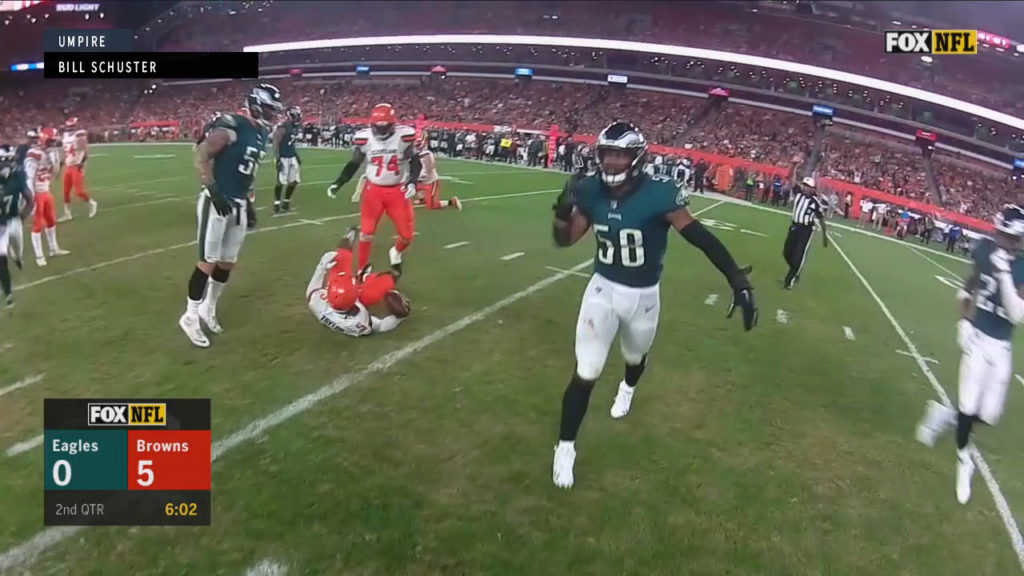
Ref Cam in the NFL
In the NBA, the Brooklyn Nets have experimented with a Hat Cam in pre-game. The dancers and pre-game hosts performed with ActionStreamer hats. The New York club broadcast this stream under the name « TeamHypeCam ». This initiative highlights the folklore of a basketball game and promotes the incredible experience basketball fans have at Barclays Center.
The system of inserting cameras and processing video streams leaves room for a lot of creativity. One could imagine the club’s mascot spending game days wearing an ActionStreamer cap. Clubs could also highlight the fan experience on match days by broadcasting a typical fan’s evening at the stadium in first person. The possibilities are endless!
ActionStreamer satisfies fans’ desire to be closer to the action. Advances in video streaming speed allow us to enjoy the action from the perspective of the live players. Many uses of this technology come to mind to enhance the fan experience. Like WaitTime, ActionStreamer’s impact extends beyond sports. The technology for processing on-board camera feeds is also used by the Air Force.
Vous avez aimé cet article ?
In english
Fan Controlled Football League (FCFL): The most exciting fan experience of 2021
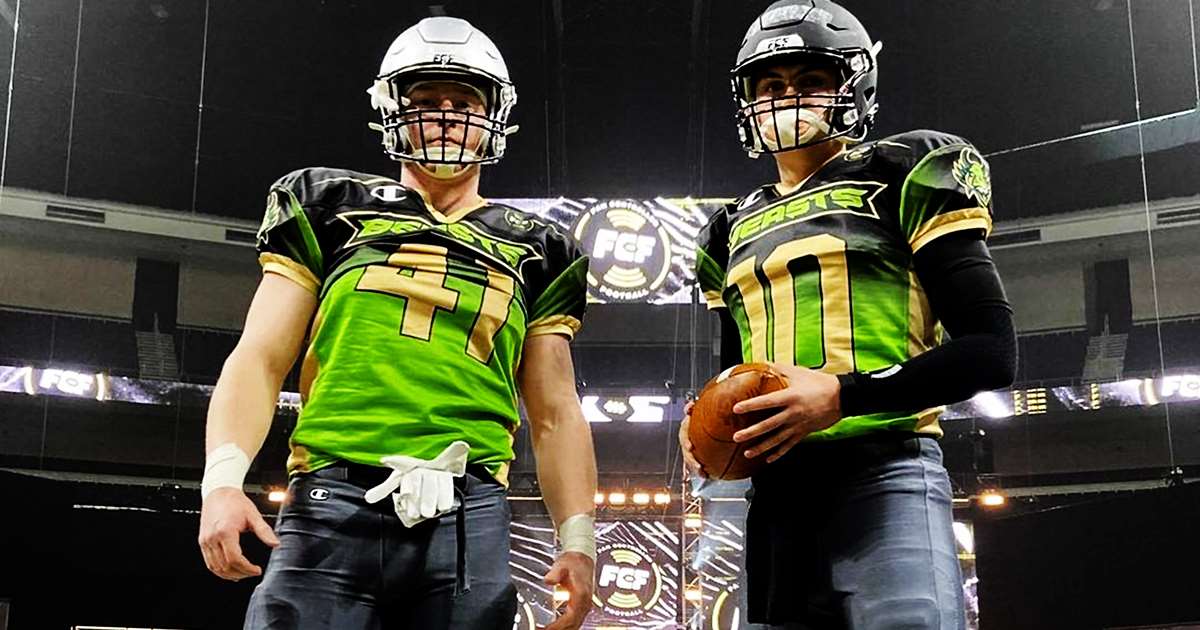
The Fan Controlled Football gives fans the opportunity to take control of a football league from A to Z. First they decided on the rules of the competition and then they took over their teams. With an engaging fan experience and an ultra immersive broadcast, the FCFL concludes a more than successful first season. Will this type of entertainment league format become a standard in the sports industry?
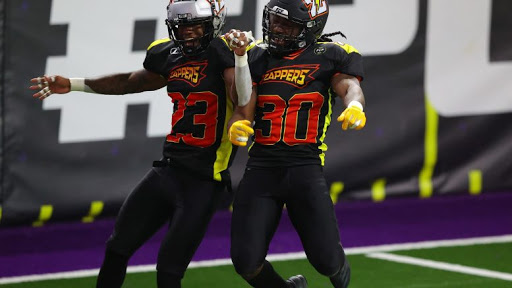
Zappers celebrate a touchdown
Fan Controlled Football responds to a growing demand for more fun, more immersive and easy-to-follow competitions
The FCFL embraces the changes in the entertainment industry
Over the past 40 years, technology has had a strong impact on the way new generations entertain themselves. A strong participative culture has emerged from social media. The democratization of gaming has created a need for interactivity in entertainment. Our ability to access thousands of pieces of information at any given moment has led to the development of entertainment products that adapt their pace and duration to the different moments in which they are consumed.
« Fast paced. Hard hitting. No replay. Running clock. All action. »
Thus, alongside traditional big leagues, whose rules were often established more than a century ago, « entertainment leagues » are gaining in popularity. In general, their success is based on the same pattern.
- Start with a traditional sport.
- Shorten the length of a game to appeal to casual fans.
- Change the rules to make the game faster and easier to follow.
- Make games more immersive even if it means infringing on the sports aspect of the game.
These are changes that would be difficult for the public to accept if they were made by a traditional league like the Premier League, the NFL or the NBA. New competitions, on the other hand, can put entertainment first without any problem. Rugby X, the XFL, the International Swimming League and even, to some extent, Formula E have been doing this. The Fan Controlled Football League takes this concept to the extreme.
A football competition where fans decided to speed up the action
The FCFL is composed of 4 teams: the Glacier Boyz, the Wild Aces, the Beasts and the Zappers. The competition is played every Sunday in a high tech studio with rules that were chosen by the fans. Football is a rather slow sport. In the NFL the average game lasts more than three hours. The action often stops. NFL teams have large squads within which 3 squads of 11 players take turns on a 100 yard field. The FCFL is played 7vs7 on a 50-yard field with no special squads and no kicking. These new rules speed up the game. Matches are played in less than an hour (two 20-minute halves) without replay, without stopping the clock. No need to book your whole afternoon to follow a game anymore.
« New rules and a new format maximize excitement, substantially reduce penalties, and BRING BACK THE FUN! »
Like the XFL, the FCFL has reinvented touchdown conversions. The new system is just like the game: fast-paced and impressive. No more kicking. Fans can choose to have their team attempt a 5-yard conversion for 1 point or a 10-yard conversion for 2 points. The conversions have a wide receiver and a defensive back in 1vs1 confrontation while the quarterback has 3 seconds to throw the ball to his teammate.
A competition in tune with Generation Z
At a time when Generation Z is turning more and more to gaming, the FCFL uses many of the codes of this industry. First of all, it is a form of interactive entertainment. The fan experience of a FCFL game is a hybrid between an NFL game, fantasy football and a game of « The Yard » on Madden. Visually, the league is reminiscent of the gaming industry. In addition, the competition is broadcast on Twitch, which is very popular among gaming enthusiasts.
The pace of the game and the short format of the games also correspond to the consumption modes of Gen Z who would prefer to watch the highlights of an NFL game rather than dedicating their Sunday night to watching a full game. The weekly draft system is in line with this younger generation’s tendency to be fans of athletes rather than teams.
Fans build the league and manage their team from the ground up
In 2015, the founders of the FCFL had conducted an experiment by buying a team, the Salt Lake City Screaming Eagles, and delegating all decisions to the fans: the team name, the logo, the jersey design, the coach, recruiting the players. Following the success of this pilot, they decided to take it to the next level by creating a fan controlled league.
The DNA of the Fan Controlled Football League is the involvement of the fans in 100% of the decisions. From the rules of the game to calling plays during games and picking the coaches’ outfit, the fans are in control everything.
« (…) [T]he idea behind Fan Controlled Football lives with every fan who has ever yelled at a TV screen, thrown a remote control across the room or cheered wildly when their favorite team finally did the thing they wanted them to do. »
Even before the first game, the fans were already involved in the creation of the league
The fans are decision makers in the creation of the league. The game’s rulebook perfectly illustrate this. Under each rule you can find the different options offered to the fans and the option they chose. Among other things, the fans could decide on the rules for overtime, the penalty system or the definition of a catch.
« Unlike traditional leagues, our focus is on optimizing everything on the field and through the entire fan experience. If something sucks, we’ll work with the fans. »
– FCFL website
When they sign up on the FCF app, fans choose a team. Throughout the season they are asked to make choices for their team. Every Wednesday, fans decide which new players will make their team’s roster during the draft.
Halfway between sports and video games, Fan Controlled Football allows fans to guide the action on the field
Every fan registered on FCF makes decisions for their team even on game days. Fans decide on team composition, but more importantly, they decide on plays. Like in the video game Madden, fans see a selection of possible plays for the next down and have the opportunity to vote for the one they think is best. The offensive team has 10 seconds to start the game after their fans have decided which strategy they should adopt.
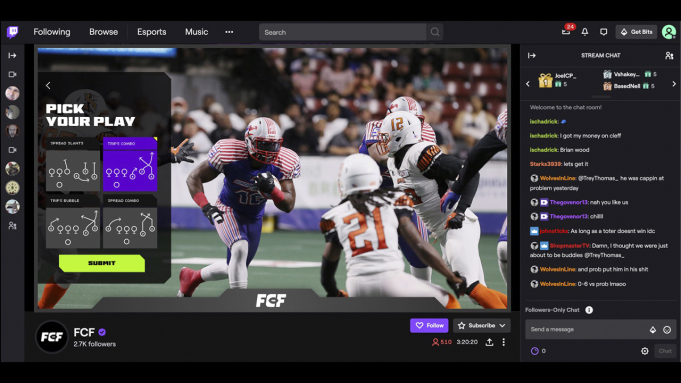
Fans can call plays live during the game
Fans are even part of the competition
As a fan, you’re asked to make these decisions all week, and it’s not without consequences. Every good decision you make earns you FanIQ. Calling the right play in a game or drafting top players will increase your FanIQ. The more FanIQ you have, the more your votes count. Also, by collecting experience badges your votes will have more power in certain situations.
Throughout the week, fans have the opportunity to earn Team Power for their team. These are bonuses that can help players on the field. For example, fans can earn a 5th down for their team.
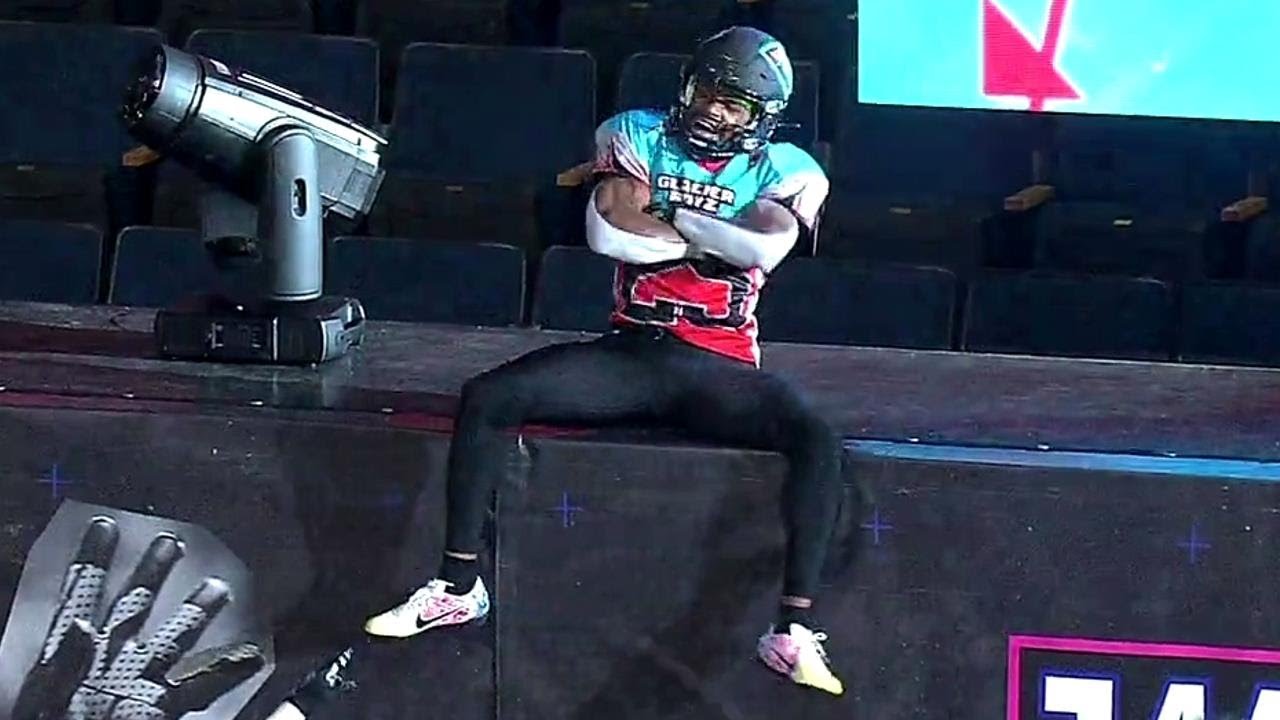
A Glacier Boy celebrating
What can traditional competitions take away from Fan Controlled Football?
The beauty of traditional competitions is that over the years generations of athletes compete for the same trophy under the same rules. Fans have built their own traditions with family and friends around these competitions. Enforcing rule changes like those in the FCFL in the World Cup, the MLB or the NBA would not make much sense. However, these competitions can learn from what happens off the field in the FCFL.
Less protocol and more show
The FCFL is an entertainment league. The players’ entrance does not follow a protocol it meant to be spectacular. They enter the field like WWE fighters. It is a show in itself. On top of that, the design of the end zone allows for wild touchdown celebrations. The extremities of the field are deep to give the players room to express their joy. They are also equipped with flashing lights, lasers and smoke machines to emphasise on the players’ joy.
Broadcast innovation
The viewing experience of the FCF games is very immersive. A drone is used to follow the action and offer fans a « Madden View » just like in the EA video game. Players are mic’d up. ActionStreamer provides helmets equipped with cameras to follow the action in the first person POV. The arena is also equipped with 180° VR cameras. Fans are up close and personal with the action. This type of set up can be replicated in any type of sport. The NFL and MLB have already experimented with microphones on players as well as the ActionStreamer helmets equipped with cameras. The XFL is taking it a step further by conducting interviews with players on the sidelines during the game.

Madden View
Push forward celebrities who contribute to the league’s hype
Each team has celebrity owners who have an affinity for football. For example, the rapper Quavo from Migos is a star co-owner of the Glacier Boyz. He was a quarterback for his high school team and is a big Georgia Bulldogs fan. Former Seahawks and 49ers cornerback, Superbowl winner and multiple All Pro, Richard Sherman is also a co-owner of the Glacier Boyz. Finally, the third interesting profile is the youtuber and tiktoker Deestroying joined them as co-owner of the Glacier Boyz. He is former kicker at UCF, the NCAA excluded him from the competition following his commercial success on Youtube.
These celebrities bring attention to the league and contribute to its success. It is important to involve them in the competition. The variety of profiles among team owners allows to attract a wide audience to the FCFL. Just like Drake plays a big role in the Raptors’ fan base, even without owning a team, celebrities who have a strong affinity with a club can participate in the growth of the community.
« Power to the fans » is the FCF’s motto and the league walks the talk. By handing the fans full control of the competition, the FCFL offers the most engaging experience in the sports industry today. While this league format will likely not become a standard, we can expect to see more and more entertainment leagues emerge alongside the traditional leagues. Traditional leagues can learn from the FCFL’s focus on pre-game shows, immersive broadcasting and communication around industry personalities.




